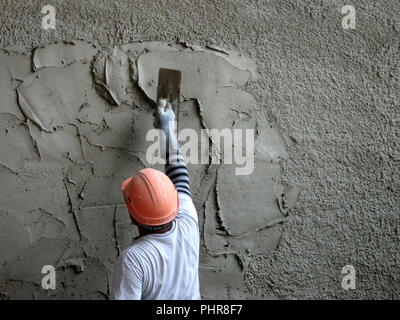Key Tips and Devices for Effective Smudging in your house Renovation Endeavors
Achieving a perfect plaster surface in your home renovation projects needs a mix of the right tools and tried and tested strategies. Recognizing the subtleties of mixing plaster and using it in thin layers can substantially influence the last result.
Necessary Smudging Devices
A plasterer's toolkit is fundamental to achieving a sturdy and smooth surface on walls and ceilings. The necessary tools encompass a selection of executes created to help with the gluing procedure efficiently and properly. Secret components include a hawk, which is a flat, square device used to hold the plaster while using it to surfaces. This device permits simple transport and application of the material.

In addition, a blending container is essential for preparing plaster, ensuring the appropriate consistency prior to application. A gluing brush or sponge works for smoothing and finishing touches out structures. Finally, safety tools such as masks and gloves should be consisted of to protect the customer from dirt and chemicals. With each other, these necessary plastering tools make it possible for both experts and DIY lovers to accomplish premium lead to their plastering jobs.
Surface Prep Work Strategies
Correctly preparing the surface area before plastering is important for making sure adhesion and achieving a flawless finish. The primary step includes cleaning up the surface to get rid of any dust, oil, or old paint that might hinder the plaster's ability to bond effectively. An extensive clean with an ideal cleaning remedy is advised, followed by permitting the surface area and washing to dry completely.
Following, evaluate the surface area for any flaws or cracks. These should be loaded with a suitable filler compound and permitted to heal according to the producer's guidelines. For permeable surfaces, using a guide is necessary to enhance and create a consistent texture bond.
Furthermore, it is crucial to ensure that the surface area is stable and structurally noise. Any loose products, such as flaking paint or damaged drywall, ought to be fixed or eliminated. Think about utilizing a scratch layer to improve hold. if functioning with stonework surfaces.
Mixing Plaster Like a Pro

Using a tidy blending container, pour the water initially, after that progressively add the plaster powder while stirring constantly. This approach assists to stop clumping and ensures an also distribution of products.
Once blended, allow the plaster to relax for a few minutes to allow the plaster crystals to moisten completely. This pause improves workability and minimizes the threat of fracturing during application. By complying with these steps, you can mix plaster like a professional, setting the foundation for an effective smudging job in your house enhancement endeavors.
Application Techniques for Smooth Finishes
With the plaster combination prepared to the perfect uniformity, the next action includes picking suitable application techniques to attain a smooth finish. The option of application tools significantly influences the final appearance of the plastered surface area. For ideal results, a stainless steel trowel is commonly recommended. This tool permits a penalty, even distribution of plaster across the surface area while lessening trowel marks - Plastering.
Begin by using a charitable quantity of plaster to the surface using the trowel, guaranteeing it adheres well. Once the initial learn the facts here now coat is used, make use of a sweeping motion to smooth the surface area, applying even pressure.
For the last touches, a moist sponge can be utilized to refine the surface even more. Gently mist the plaster with water and gently massage the surface area to achieve a sleek result. Constantly keep in mind to work in small sections to preserve control over the application procedure, guaranteeing a smooth, specialist surface throughout your plastering task.
Usual Blunders to Avoid
When embarking on a gluing project, preventing typical blunders is vital for accomplishing a remarkable surface. Make sure that all dirt, grease, and loosened products are eliminated discover this before using plaster.
Another common error is applying plaster too heavily. Thick layers can crack as they dry out, endangering the integrity of the finish. Rather, go with several slim layers, permitting each layer to completely dry totally prior to applying the following.
In addition, inadequate blending techniques can lead to inconsistent structure and workability. Always comply with the manufacturer's guidelines for mixing ratios and completely blend the plaster to accomplish a consistent consistency.

Timing also plays an important function; plaster must be used while the substrate perspires to improve attachment. Lastly, prevent making use of incorrect devices. High-grade trowels and drifts can make a substantial difference in attaining a smooth coating. By avoiding these typical pitfalls, you can improve the quality and long life of your plastering job, causing a much more professional result in your home improvement ventures.
Verdict
Efficient smudging needs an extensive understanding of vital devices and methods. Proficiency of these aspects not just adds to the visual charm of a space yet also makes certain durability and long life in smudging jobs, making them indispensable to effective home enhancement undertakings.
A float is an additional important tool, which assists in leveling the plaster and attaining a consistent surface area.

By adhering to these steps, you can blend plaster like a pro, establishing the structure for a successful gluing project in your home renovation ventures.
Gently haze the plaster with water and delicately massage the surface to accomplish a sleek impact.
Comments on “Residential Plastering: Change Your Home with Proficient Craftsmanship”